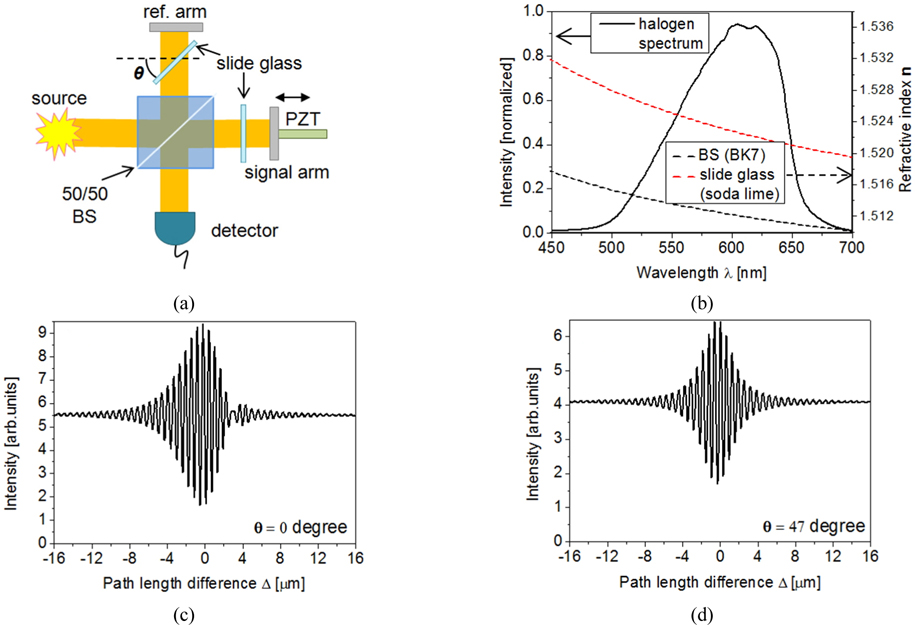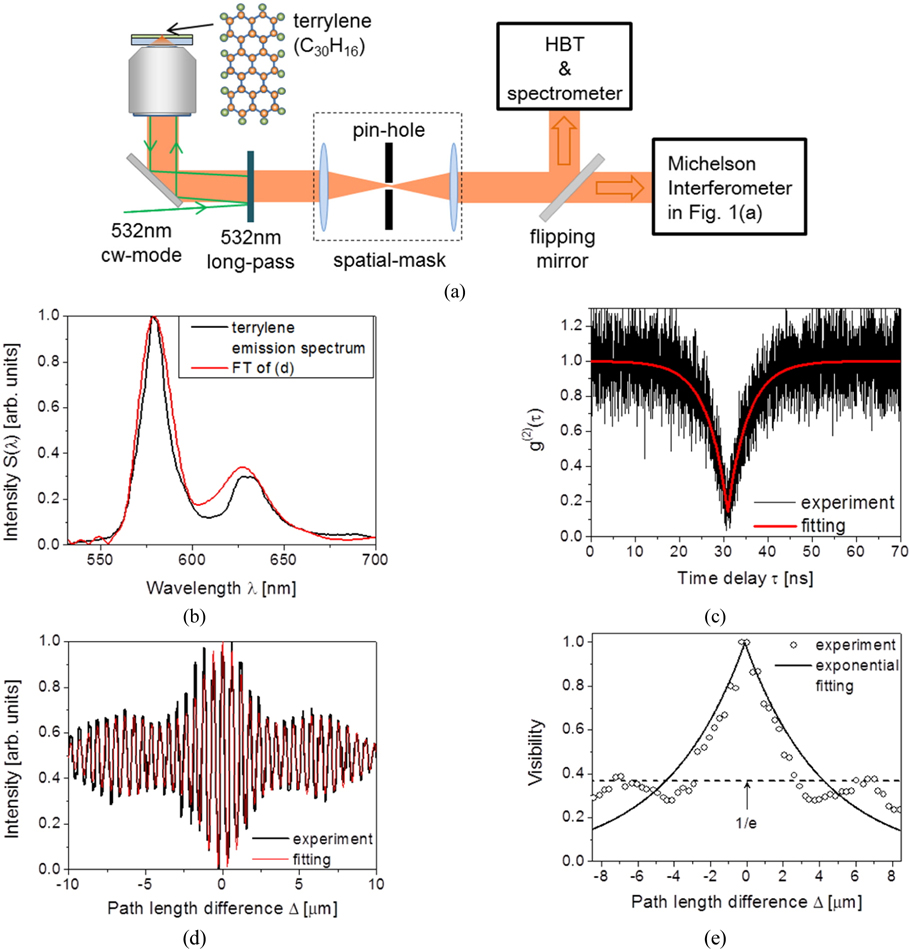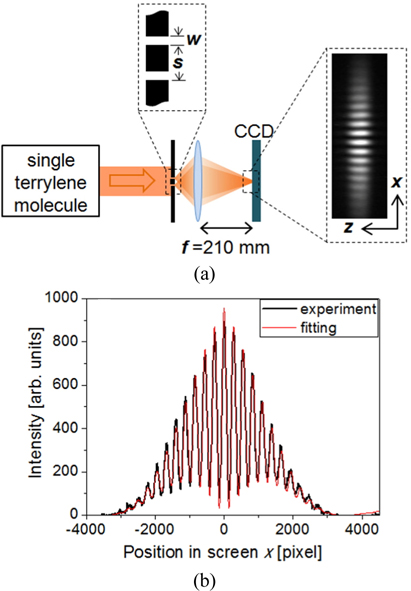



Coherence length (time) is a key parameter in many classical and quantum optical applications. Two interferometers – Michelson and Young’s double-slit – are used to characterize the temporal coherence of single photons emitted from single terrylene molecules. For quantitative analysis, a dispersion-related distortion in the interference pattern of a Michelson interferometer is carefully corrected by a simple dispersion compensation. Additionally, it has been demonstrated that Young’s interferometer can be used in temporal coherence studies at the single photon level with high accuracy. The pros and cons of the two systems are discussed. The measured coherence lengths in the two systems are consistent with one another under the self-interference interpretations.
An on-demand single photon source is an essential ingredient for the successful realization of many quantum optical applications likes quantum cryptography, computing, imaging, and metrology [1-3]. Photons from solid state single emitters, such as single molecules, quantum dots, and diamond color centers, are considered to be promising candidates as high-quality ‘on-demand’ single photon sources because of their good photo-stability and high controllability [1-4]. Different properties of single photons are required for different applications. For an example, quantum information processing requires photons to be indistinguishable with long quantum coherence times [5]. In contrast, optical coherence tomography (OCT) requires shorter coherence lengths in order to obtain better imaging depth resolution. OCT has been developed based on classical broad-band sources [6, 7], and quantum OCT has also been demonstrated [8]. The coherence of light sources plays a key role in many optical applications (e.g., the examples mentioned above); therefore, it is important to correctly characterize the coherence properties of a light source.
Several different methodologies have been used in coherence studies that have investigated many different types of light sources (including single photon sources) [9-12]. To date, the Michelson interferometer (MI) has been most widely used in temporal coherence studies because the temporal coherence length can be obtained directly from the decay constant of its interference oscillation amplitude. We also use MI as a test bench of the temporal coherence length measurement of single photons and compare these results with those obtained from Young’s double interferometer (YDI). In our measurements, MI showed an inherent dispersion broadening, which caused a distortion in the interference pattern. Therefore, we applied a simple dispersion compensation in order to systematically remove this problem.
Since the triumphant success of Thomas Young more than 200 years ago, YDI has been applied to the proof of principle demonstrations of interference [13, 14], and to spatial coherence studies [15]. However, researchers have been reluctant to use YDI in temporal coherence studies because the fast-decaying diffraction signal conceals the interference features at long delays. For a broad-band source, however, its coherence length can be short enough to be characterized by YDI. In addition, there is no distortion in the interference signal which might appear in MI as mentioned earlier. In this study, we show that the temporal coherence length of single photons from single molecules at room temperature can be measured with high accuracy using YDI. The measured coherence lengths in the two systems are consistent with one another under the self-interference interpretations. [13].
II. DISPERSION CALIBRATION IN A MICHELSON INTERFEROMETER (MI)
A basic diagram of MI is shown in Fig. 1(a). Here, the source beam is divided by a 50/50 beam splitter (BS) into two paths – the reference path and the signal path. The optical path length difference
III. COHERENCE OF A SINGLE PHOTON SOURCE MEASURED BY MI
In the next step, we use this dispersion calibrated MI to investigate the coherence characteristics of photons from single terrylene molecules. Figure 2(a) shows the experimental schematics. A thin
The total interference pattern of single photons is given as the sum of the self-interference. Therefore, the fitting function can be written simply as follows
where 〈
IV. TEMPORAL COHERENCE ANALYSIS OF SINGLE PHOTONS BY YOUNG'S INTERFEROMETER
The experimental setup used to generate a well-collimated single photon stream is the same as the one shown in Fig. 2(a). The double-slit interferometer is illustrated separately in Fig. 3(a). Two parallel slits with an opening width
where, ,
We studied the temporal coherence of photons emitted from single molecules by applying two different interferometers - MI and YDI. The coherence lengths can be determined with high accuracy by both systems, and the theory based on the self-interference matches very well with the experimental results. When comparing the two interferometers, MI gave more detailed features in the interference pattern (e.g., the beating shape) but a dispersion-related distortion in the interference pattern needs to be corrected. Alternatively, YDI has a rather simple configuration, which allows for an easy adjustment, and does not require dispersion correction. However, it was not possible to see the details in the interference pattern of YDI as compared to MI.




